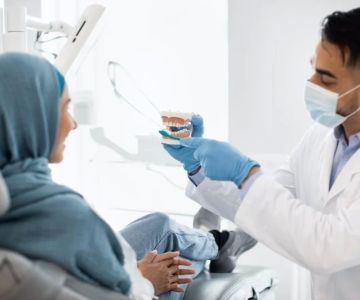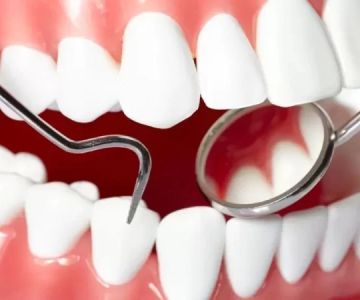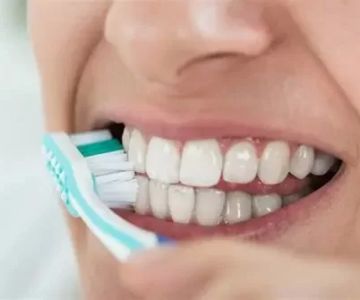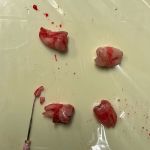When Did Oral Hygiene Begin?
Oral hygiene is a crucial part of daily life for people around the world. Brushing our teeth, flossing, and visiting the dentist are activities so ingrained in our routines that we rarely stop to think about how long we’ve been caring for our teeth. However, the history of oral hygiene is more interesting and complex than one might expect. Let’s take a deep dive into the origins of dental care, explore when oral hygiene first began, and uncover the innovations that have shaped modern practices.
The Ancient Beginnings of Oral Hygiene
Surprisingly, oral hygiene dates back to ancient civilizations, long before the modern toothbrush or toothpaste was even imagined. The earliest known tools for cleaning teeth can be traced back over 5,000 years to the ancient Egyptians. Around 3,000 BCE, the Egyptians used a rudimentary form of toothpaste made from ingredients such as powdered pumice stone, myrrh, and powdered ox hooves. Though it may not sound particularly pleasant today, these early dental care products were used to combat tooth decay and maintain oral health.
In addition to early toothpaste, the Egyptians were also known to use chew sticks—small twigs from trees such as Salvadora persica, known as the "toothbrush tree." These twigs had frayed ends that were used to scrub the teeth. The chew stick method was widely adopted in ancient civilizations, including Mesopotamia and India. In fact, the concept of using natural materials to clean teeth spread throughout different cultures, with each region developing its own methods.
The Role of the Greeks and Romans in Oral Hygiene
By the time of the Greeks and Romans, oral hygiene had evolved significantly. The Greeks, who were pioneers in many scientific disciplines, understood the importance of maintaining healthy teeth. They used various dental tools, such as metal picks and toothpicks, to clean between their teeth. Interestingly, the ancient Greeks also created a form of toothpaste, though their formula consisted of ingredients like crushed bones, oyster shells, and powdered charcoal. This concoction was said to help clean teeth, but it likely didn’t provide the same level of effectiveness that modern products offer.
The Romans, influenced by Greek innovations, also contributed to the history of oral hygiene. They used a combination of tooth powders, which often included ingredients such as crushed bones, powdered charcoal, and even urine (which, due to its ammonia content, was believed to have a cleaning effect). While their methods were far from ideal by today’s standards, the Romans' commitment to personal hygiene laid the groundwork for future dental practices.
Dental Care in the Middle Ages and Beyond
As history progressed, the Renaissance period brought significant changes to many aspects of daily life, including oral hygiene. However, it wasn’t until the 17th century that the concept of oral hygiene began to take on a form that we would recognize today. During the Middle Ages, dental care became less of a priority in Europe, as dental decay and oral diseases were often seen as inevitable consequences of aging. The dental tools of the time, which were largely primitive, included rudimentary forceps for tooth extractions, and the idea of brushing teeth had largely faded from practice.
However, dental care gradually began to evolve again. In the 1600s, European barbers and blacksmiths often doubled as dentists, performing tooth extractions and rudimentary cleaning. These early "dentists" were largely untrained in the science of dentistry but used a combination of trial and error and traditional methods to treat dental issues.
The Invention of the Modern Toothbrush and Toothpaste
The true revolution in oral hygiene came with the invention of the modern toothbrush and toothpaste. In 1780, William Addis, an Englishman, is credited with creating the first mass-produced toothbrush. Addis's design featured a wooden handle with bristles made from the hair of pigs, attached using holes drilled into the handle. This toothbrush was a significant advancement over the previous methods, as it was more efficient at cleaning teeth and more comfortable to use than the chew sticks of the past.
Meanwhile, toothpaste as we know it today also began to take shape in the 19th century. Early formulations included ingredients like chalk, soap, and aromatic oils. However, it wasn't until the late 1800s that the first commercially available toothpaste, "Dr. Sheffield’s Creme Dentifrice," was introduced. This product, made by Dr. Washington Sheffield, was packaged in a collapsible metal tube and contained a mixture of baking soda and other compounds to clean teeth. This toothpaste marked the beginning of the modern dental care industry.
The Rise of Professional Dentistry in the 19th and 20th Centuries
As the industrial revolution took hold, dentistry became more formalized as a profession. The first dental school, the Baltimore College of Dental Surgery, was founded in 1840, establishing dentistry as a recognized profession. Advances in dental tools and techniques were introduced throughout the 19th century, and by the early 20th century, oral hygiene practices had become more standardized. The development of electric toothbrushes in the 1960s and the widespread availability of fluoride toothpaste in the 1950s helped further improve oral hygiene practices around the world.
Throughout the 20th century, oral hygiene was further enhanced with technological advancements. The introduction of fluoride in public water supplies and the creation of dental floss revolutionized preventive care. Additionally, the rise of the American Dental Association (ADA) in the early 20th century helped establish evidence-based guidelines for brushing, flossing, and regular dental visits, significantly reducing the incidence of tooth decay and gum disease.
Oral Hygiene in Modern Times
Today, oral hygiene is a crucial part of daily life, and its importance is widely recognized. Modern oral hygiene products, such as electric toothbrushes, fluoride toothpaste, and antimicrobial mouthwashes, have made it easier than ever to maintain healthy teeth and gums. Additionally, advances in cosmetic dentistry, orthodontics, and preventive care have given people more options than ever to enhance their smiles and prevent oral diseases.
In the United States, regular dental check-ups and professional cleanings are considered essential for maintaining long-term oral health. The widespread education on the importance of brushing, flossing, and avoiding sugary foods has contributed to a significant decline in the prevalence of cavities and other dental issues. The role of dentists, dental hygienists, and other professionals in educating the public about proper oral hygiene continues to be an essential part of the modern dental landscape.
It’s fascinating to think about how far oral hygiene has come since its humble beginnings thousands of years ago. From ancient Egyptian chew sticks to the advanced technologies we use today, dental care has evolved into an industry dedicated to preserving and enhancing our oral health. So the next time you brush your teeth, remember that you're continuing a tradition that has been practiced for millennia!
For expert advice on oral care, consider visiting Dentistry Toothtruth, where you can find the best services and tips to keep your smile bright and healthy.







 Children's Dental FunZone - Pediatric Dentist & Orthodontist - West LA4.0 (1410 review)
Children's Dental FunZone - Pediatric Dentist & Orthodontist - West LA4.0 (1410 review) Chestnut Ridge Pediatric Dental5.0 (172 review)
Chestnut Ridge Pediatric Dental5.0 (172 review) Dr. Wayne E. Turk, DMD5.0 (3 review)
Dr. Wayne E. Turk, DMD5.0 (3 review) LAX DENTAL and ORTHODONTICS4.0 (107 review)
LAX DENTAL and ORTHODONTICS4.0 (107 review) Implants and Root Canals Inc.5.0 (209 review)
Implants and Root Canals Inc.5.0 (209 review) King's Family Dental Group4.0 (147 review)
King's Family Dental Group4.0 (147 review) The Importance of Oral Health Education During Pregnancy for a Healthy Pregnancy
The Importance of Oral Health Education During Pregnancy for a Healthy Pregnancy Best Tips for Brushing Your Teeth Properly for Healthy Gums: Essential Techniques for Oral Health
Best Tips for Brushing Your Teeth Properly for Healthy Gums: Essential Techniques for Oral Health Why Skipping Dental Checkups Can Lead to Bigger Oral Health Problems
Why Skipping Dental Checkups Can Lead to Bigger Oral Health Problems Advantages of Porcelain Dental Restorations
Advantages of Porcelain Dental Restorations How Can Diabetes Cause Tooth and Gum Problems? Preventing and Managing Oral Health Issues
How Can Diabetes Cause Tooth and Gum Problems? Preventing and Managing Oral Health Issues Healthy Habits for Promoting Good Oral Health and Hygiene: Tips for a Healthy Smile
Healthy Habits for Promoting Good Oral Health and Hygiene: Tips for a Healthy Smile